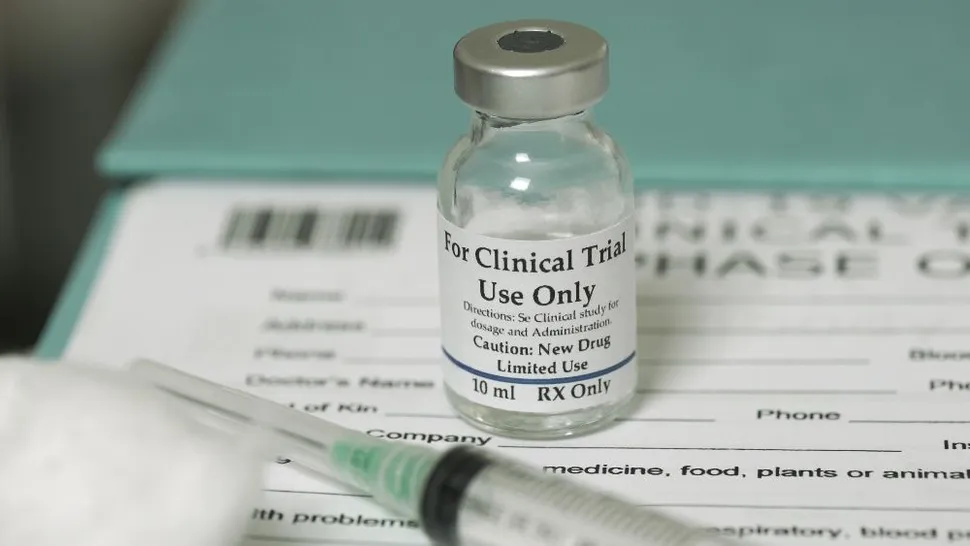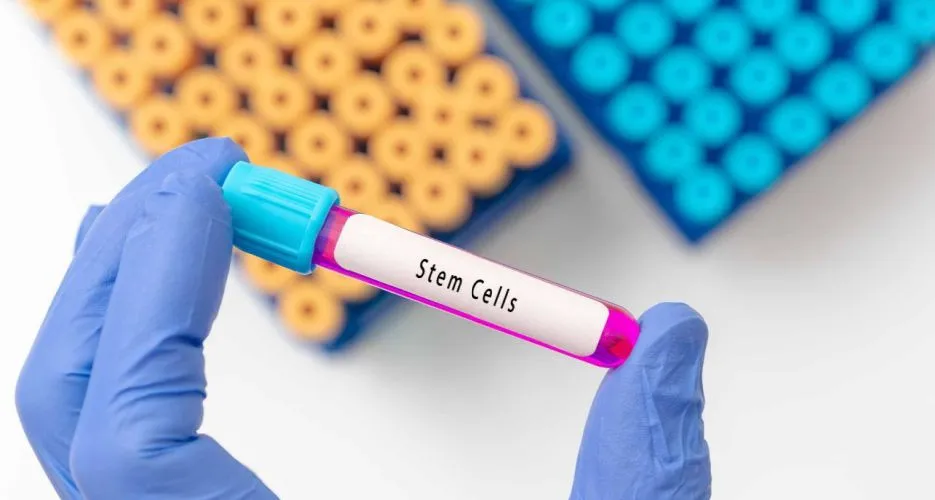New Trial Required for Iomab-B FDA Approval

Actinium Pharmaceuticals has recently published new information from the U.S. Food and Drug Administration (FDA) regarding Iomab-B, a targeted radiotherapy designed to prepare patients for bone marrow transplants. Iomab-B is being evaluated for patients with acute myeloid leukemia (AML) that has either returned after initial treatment (relapsed) or has not responded to standard therapies (refractory). While the initial results were promising, the FDA has requested additional evidence before considering iomab-B for approval. In this article we’ll go over everything that you need to know.
What is Iomab-B?
Iomab-B is a new therapy that combines an anti-CD45 monoclonal antibody with a radioactive isotope, Iodine-131. You might also see it referred to as I-131 apamistamab. This type of therapy, called radioimmunoconjugate, is supposed to be more targeted towards leukemia cells since the radioactive isotope is directed to the cells that the antibody recognizes, in this case, those that express CD45 on their surface. Investigators hope that giving Iomab-B with reduced intensity chemotherapy (RIC) will get more patients into remission before undergoing allogeneic stem-cell transplant and that the remission will last longer than with chemotherapy-only induction.
What are the Results of the SIERRA Trial?
The Phase 3 SIERRA trial included 153 patients with relapsed/refractory acute myeloid leukemia, the key findings were:
- 22% of patients who received iomab-B achieved complete remission that lasted at least six months, while none of the patients in the control group did.
- Patients receiving Iomab-B had better odds of proceeding to transplant and faster than those receiving standard chemotherapy induction.
- The overall survival was 6.4 months for patients taking iomab-B, compared to 3.2 months for those without it. Although this can suggest a potential survival benefit, the data was not statistically significant.
- This study couldn’t demonstrate a survival benefit because 60% of patients in the control arm received Iomab-B after their initial treatments failed, making it difficult to reach definitive conclusions.
- Although side effects were considered manageable and less frequent with
Iomab-B, further trials will help clarify the long-term safety profile of Iomab-B in a more controlled environment where the crossover is not allowed.
Why is the FDA Asking for More Data?
Despite the promising results, the FDA is requiring a new randomized clinical trial that better demonstrates a survival benefit. This new trial will be different from the SIERRA trial by not allowing patients to switch from the control group to the Iomab-B group, which should provide clearer data on the long-term effectiveness and safety of Iomab-B.
What’s Next for Iomab-B?
Actinium is currently in discussions with the FDA to finalize the design of this new trial. However, due to the significant investment required for such a study, Actinium has decided to seek a partner to help bring Iomab-B to market in the U.S. In the meantime, the company will focus on developing other therapies, such as Actimab-A, which is also a radioimmunoconjugate but targets CD33-positive cells. Actimab-A, also known as lintuzumab-Ac225, is in Phase 1/2 trials for patients with relapsed/refractory acute myeloid leukemia and is showing promising results so far.
Why are These News Important for Patients?
While the delay in approval is disappointing, it’s important to understand that the FDA’s decision is driven by the need to ensure that new treatments are both effective and safe. The requirement for more data means that, if approved, Iomab-B will have been thoroughly evaluated to provide the best possible outcomes for patients.
Although Iomab-B’s availability may be delayed, Actinium and other companies' ongoing research and development efforts continue to offer hope for new and better treatments. Staying informed about these developments and discussing them with your healthcare provider is essential as you consider your treatment options.
Keep track of your disease by connecting records to HealthTree Cure Hub, an innovation that powers life-saving research!
If you are interested in keeping track of your labs, participating in or finding a clinical trial or discovering personalized treatment options, you can create a free HealthTree Cure Hub account!
Sources:
Actinium Pharmaceuticals has recently published new information from the U.S. Food and Drug Administration (FDA) regarding Iomab-B, a targeted radiotherapy designed to prepare patients for bone marrow transplants. Iomab-B is being evaluated for patients with acute myeloid leukemia (AML) that has either returned after initial treatment (relapsed) or has not responded to standard therapies (refractory). While the initial results were promising, the FDA has requested additional evidence before considering iomab-B for approval. In this article we’ll go over everything that you need to know.
What is Iomab-B?
Iomab-B is a new therapy that combines an anti-CD45 monoclonal antibody with a radioactive isotope, Iodine-131. You might also see it referred to as I-131 apamistamab. This type of therapy, called radioimmunoconjugate, is supposed to be more targeted towards leukemia cells since the radioactive isotope is directed to the cells that the antibody recognizes, in this case, those that express CD45 on their surface. Investigators hope that giving Iomab-B with reduced intensity chemotherapy (RIC) will get more patients into remission before undergoing allogeneic stem-cell transplant and that the remission will last longer than with chemotherapy-only induction.
What are the Results of the SIERRA Trial?
The Phase 3 SIERRA trial included 153 patients with relapsed/refractory acute myeloid leukemia, the key findings were:
- 22% of patients who received iomab-B achieved complete remission that lasted at least six months, while none of the patients in the control group did.
- Patients receiving Iomab-B had better odds of proceeding to transplant and faster than those receiving standard chemotherapy induction.
- The overall survival was 6.4 months for patients taking iomab-B, compared to 3.2 months for those without it. Although this can suggest a potential survival benefit, the data was not statistically significant.
- This study couldn’t demonstrate a survival benefit because 60% of patients in the control arm received Iomab-B after their initial treatments failed, making it difficult to reach definitive conclusions.
- Although side effects were considered manageable and less frequent with
Iomab-B, further trials will help clarify the long-term safety profile of Iomab-B in a more controlled environment where the crossover is not allowed.
Why is the FDA Asking for More Data?
Despite the promising results, the FDA is requiring a new randomized clinical trial that better demonstrates a survival benefit. This new trial will be different from the SIERRA trial by not allowing patients to switch from the control group to the Iomab-B group, which should provide clearer data on the long-term effectiveness and safety of Iomab-B.
What’s Next for Iomab-B?
Actinium is currently in discussions with the FDA to finalize the design of this new trial. However, due to the significant investment required for such a study, Actinium has decided to seek a partner to help bring Iomab-B to market in the U.S. In the meantime, the company will focus on developing other therapies, such as Actimab-A, which is also a radioimmunoconjugate but targets CD33-positive cells. Actimab-A, also known as lintuzumab-Ac225, is in Phase 1/2 trials for patients with relapsed/refractory acute myeloid leukemia and is showing promising results so far.
Why are These News Important for Patients?
While the delay in approval is disappointing, it’s important to understand that the FDA’s decision is driven by the need to ensure that new treatments are both effective and safe. The requirement for more data means that, if approved, Iomab-B will have been thoroughly evaluated to provide the best possible outcomes for patients.
Although Iomab-B’s availability may be delayed, Actinium and other companies' ongoing research and development efforts continue to offer hope for new and better treatments. Staying informed about these developments and discussing them with your healthcare provider is essential as you consider your treatment options.
Keep track of your disease by connecting records to HealthTree Cure Hub, an innovation that powers life-saving research!
If you are interested in keeping track of your labs, participating in or finding a clinical trial or discovering personalized treatment options, you can create a free HealthTree Cure Hub account!
Sources:

about the author
Jimena Vicencio
Jimena is an International Medical Graduate and a member of the HealthTree Writing team. She has a passion for languages and is currently learning Japanese. In her free time, she loves playing with her cats. Jimena is also pursuing a bachelor's degree in journalism.
More on Treatment Advances
Trending Articles

Get the Latest Acute Myeloid Leukemia Updates, Delivered to You.
By subscribing to the HealthTree newsletter, you'll receive the latest research, treatment updates, and expert insights to help you navigate your health.
Together we care.
Together we cure.
3x Faster.









